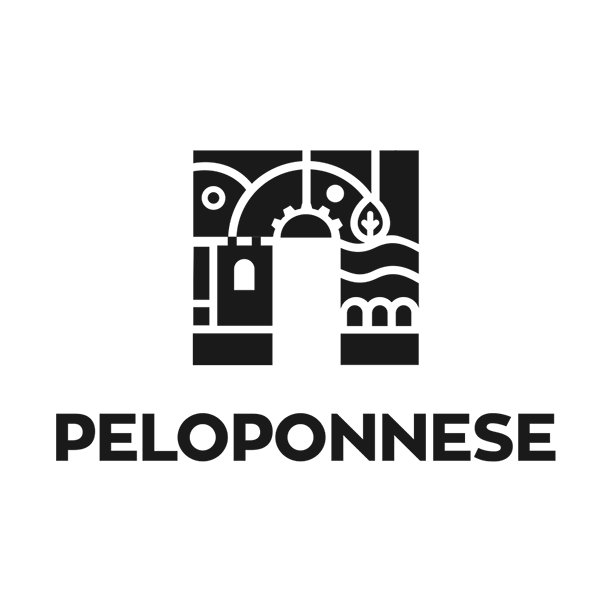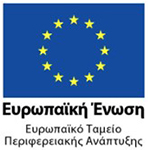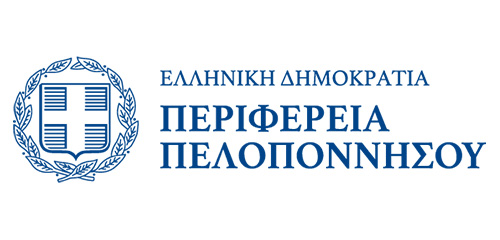Ancient Isthmia might not be as well-known as many other Archaeological sites, but it’s a great place to go if you are looking for somewhere a bit off the beaten track where you can explore ancient Greek history and culture in relative peace and quiet.
Ancient Isthmia might not be as well-known as many other Archaeological sites, but it’s a great place to go if you are looking for somewhere a bit off the beaten track where you can explore ancient Greek history and culture in relative peace and quiet. It has the added bonus of Roman bath houses with truly impressive mosaic floors, and a small but very interesting museum. And as if that isn’t enough, it was the site of the Isthmian Games which were the third most important Panhellenic Games after the Olympic Games and the Games at Delphi.
The first thing to note about the site is its strategic position at the entrance to the Peloponnese which made it the perfect spot for the Ancient Greeks to gather before heading into battle or launching military campaigns. But the area’s history goes back far further as it was first settled about 7000 to 8000 years ago. In fact, there are indications of human habitation in Kyra Vrysis dating back to approximately 1,300 BC.
Greek Mythology tells us that the Isthmia was protected by Poseidon, which is why the sea gods were worshiped in the area. Myth also has it that King Sisyphus found the lifeless body of his nephew, Melikertis (Palaemon), on the back of a dolphin which had brought the dead child back to dry land. He then established the local cult which worshipped the god-child Palaemon. Indeed, the Isthmian funeral games were established in Palaemon’s honour, and then evolved into one of the four great Panhellenic athletic events.
If you use your imagination, you can see how imposing the Sanctuary of Poseidon which stood at the eastern end of the Isthmus must have seemed to travellers who were passing through. Unfortunately, modern-day travellers can only see the foundations of the temple, mainly because materials from the temple were used under the Roman Emperor Justinian in the 6th century BC to build a strong defensive wall. The Hexamillion (six-mile) Wall ran all the way across the Isthmus and protected the entire Peloponnese from being attacked by the barbarians coming from the north. In fact, so much of the wall was built using materials taken from ancient Greek sites that until fairly recently archaeologists thought the wall had actually been built in ancient Greek times!
THE ARCHAEOLOGICAL SITE
The site was first excavated in 1883, but it was not until 1952 that the Temple of Poseidon and the Roman Temple dedicated to Palaemon were uncovered by the American School of Archaeology.
Temple of Poseidon It seems that the temple was founded in 7th century BC, but burnt down around 450 BC. A larger Doric temple was then built but much of it was destroyed during the Corinthian War and then rebuilt once again in the Doric style. The temple’s heyday lasted until 146 BC, when the Romans destroyed Corinth. When people moved back into Corinth in 44 BC the temple was rebuilt yet again. The 2nd century saw more work completed on the temple, with the last precinct with arcades and a propylon being built.
Roman Baths and mosaic. One of the highlights of the site are the public Roman baths with a stunning and beautifully preserved mosaic floor that will make you think you’ve been transported to Pompeii! The centrepiece of the floor is two panels showing a procession of sea creatures associated with the cult of Dionysus, and you can also see a sea nymph riding a triton, again surrounded by “creatures from the deep”. The baths were built for both hot and cold bathing between 150-160 AD, probably by Herodes Atticus. Under the floor of the Roman bath there are architectural remains from a bath dating back to the classical period (4th century BC).
The Roman temple of Palaemon was built outside the precinct of the temple of Poseidon and was dedicated to Melikertis-Palaemon who was considered the patron of sailors. It was surrounded by columns and it is thought that there was a statue of the god Palaemon on the back of a dolphin in the temple. Building work began in Nero’s time (mid-1st century) and finished during the Antonine dynasty in 161-169 AD.
As we saw above, this site was the home of the Isthmian Games which were the third most important Panhellenic Games after those at Olympia and Delphi. These were prestigious games with some famous competitors, including the Emperor Nero who took part in the musical competitions that ran alongside the athletics. The games here were very much a part of the Ancient Greek “sporting calendar” as they were held every two years for over 700 years until the end of the 3rd century, when they were abolished for being a pagan ceremony. The winners were awarded wreaths of pine at first and later wreaths of wild celery.
The first stadium was built here around 550 BC and was connected to the altar of Poseidon by a sloping path. The spectators entered the stadium along sloping walkways which led to the upper stands. Over the years various additions and alterations were made to the stadium. The stands were extended and a parapet wall with large rectangular stones - part of which is still visible – was built in the classical period. Some state-of-the-art new technology was added to the stadium in the 4th century BC when starting gates for the athletes were introduced. This system of gates, known as a hysplex, worked with a unique and complex mechanical release. In the 3rd century BC a new stadium was built in the South East of the valley, 250 m away from the temple. This stadium has not been fully excavated yet. The games were held elsewhere between 146 BC and 50 AD but the stadium came back to life after that as the Isthmian Games of the Roman period were held here.
A theatre was built to the North East of the temple of Poseidon in 400BC, but there is very little left to see of it. This is where the musical competitions were held during the Isthmian Games.
There are also caves, a water network and a circular well at the site.
Find the destination on the interactive map below. Open on Google Map.
Weather
Σχετικό περιεχόμενο χρηστών (UGC)
Ενημερωθείτε για ενδιαφέροντα θέματα γύρω από τον προορισμό μέσα από το περιεχόμενο των χρηστών μας
Newsletters
- About Us
- FAQ's
- Map
- Tourism Information Centers
- Disclaimer
- Sitemap
- Our Brand
- Media Room
- Add your Business
- Corporate
- MICE

Peloponnese. The land of impossible beginnings





Design and creation from Cosmote
Marinas and Moorings
Diving Centers
Get Inspired
- Media Gallery
- Peloponnese Travel Blog
- The Peloponnese in the Media
- Your Feedback
- Users' General Content
- Users' Local Products
- Users' Events Content
- Ask a Local
More
- My peloponnese vibe
- Our providers Network
- Destinations Map
- Weather
- Public Transport
- Frequently Asked Questions
- Useful Phones
- B2B
- Destination Statistical Data
- Contact

